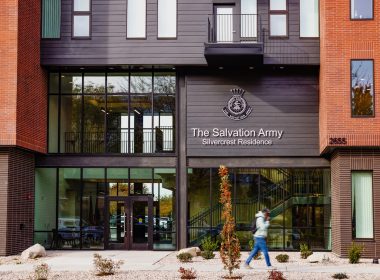By Kenneth G. Hodder, Commissioner –
Since 1975, Crestmont has served as the administrative and educational center for the USA Western Territory. Our campus sits high on a bluff overlooking the Pacific Ocean, and it is beautiful. On a clear day, one can stand on the front lawn and look far out to sea and up and down the jagged coast of California. It’s simply breathtaking.
And yet, even when I’m taking in that glorious sight, I sometimes wonder why I find it so compelling. Why am I drawn to it? Why does it touch me so deeply? What makes it beautiful?
I’m certainly not the first person to ask that question. According to the Christian theologian N.T. Wright, we human beings often experience an internal struggle when confronted by beauty. When we see a great painting or an amazing sunset, or when we gaze upon another human face, there’s an almost haunting quality to it—as though it’s not complete in itself. It’s as if the beauty before us is simply a signpost to a larger truth that is just around the corner, just out of sight. We can’t fully grasp it, we can’t get our hands on it, and yet we find it so satisfying that we yearn for more.
That’s the tantalizing thing about beauty. The joy it brings to our souls is rooted in our sense that what we are seeing or hearing must be part of a greater whole. And yet, we can’t see it all. We can’t hear it all. It’s as if we have been drawn toward something and then left waiting and wondering.
Consider the burning of Notre Dame. The world watched in horror as pieces of a cathedral erected to the glory of God, one of the most iconic images of western civilization, fell victim to the flames. Many did not identify with the faith for which that magnificent church was built, but they knew instinctively that beauty had been compromised, and so the fundraising response for its repair broke all records.
Now it takes only a moment to realize that human efforts to manufacture beauty have never been universally successful. Yet, God’s creative power never fails. In fact, it’s because of him that we recognize beauty in the first place. Indeed, he not only created the natural world, but he took what human beings saw as a symbol of shame, the Cross of Calvary, and made it beautiful through the sacrifice of his Son.
And he’s still doing it today. God still takes what is filthy and unworthy of him and makes it clean. So when we see a man or woman or child giving their heart to Christ, we stand in awe of his work, and we praise him. It’s beautiful, and we know why.
As #354 in our Songbook says:
Beautiful Christ, beautiful Christ,
Fairest of thousands and pearl of great price;
Beautiful Christ, beautiful Christ,
Gladly we welcome Thee, beautiful Christ.











